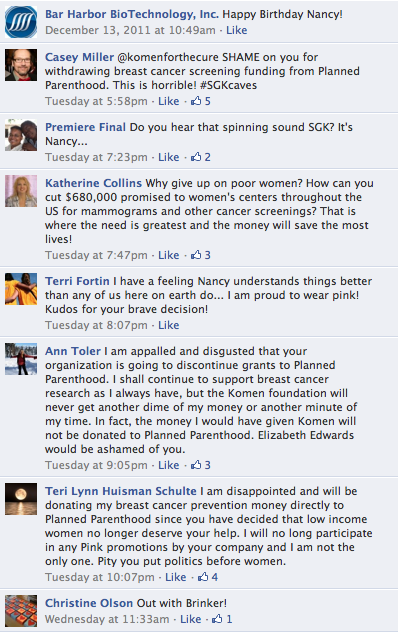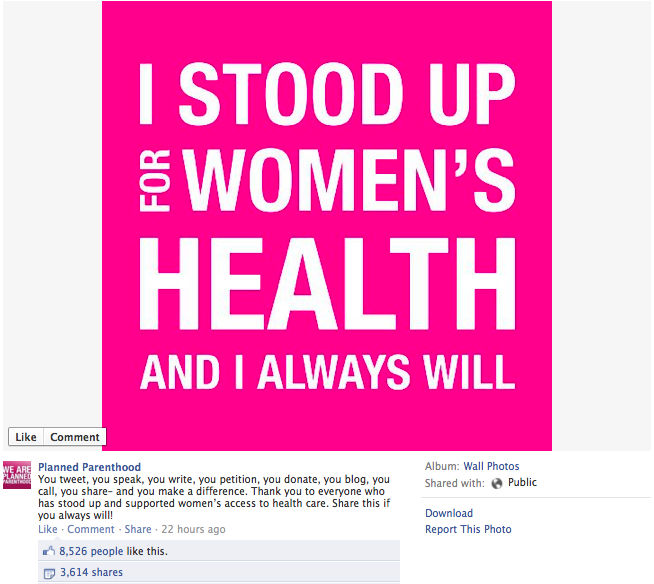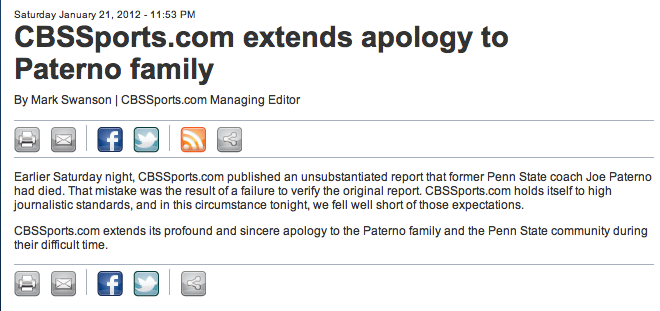The Susan G. Komen for the Cure foundation has been a behemoth in the fight against breast cancer. This week, though, SGK is in the middle of a PR nightmare regarding its decision to discontinue its support to Planned Parenthood. According to the Komen’s founder and CEO, the decision is not politically motivated. It has nothing to do with abortion, but everything to do with a policy changes meant to ensure “you are granting money to the right people.”
In this case, the right people are those organizations who are not under “formal investigation for financial or administrative improprieties by local, state or federal authorities,” reports Jeffrey Goldberg of The Atlantic.
On the surface, this sounds like a reasonable policy. Why would anyone want to fund questionable organizations? However, Goldberg’s probing reveals a political agenda. Indeed, this decision was about severing ties with the most important provider of reproductive health services in the United States. These services, of course, include abortions, and Komen finally decided to veer openly to the right on this controversial issue. Komen applied its new policy to PP, which has been the target of a congressional inquiry since September because, according to Representative Cliff Stearns (R), the organization might be using federal funding to pay for abortions.
However, this entire prologue is not the reason I’m decided to write this piece. What makes the Komen vs PP debacle interesting to me is its social media dimension. It makes me wonder whether or not organizations like Komen take social media seriously, or if they merely think of it as an additional outlet for their press releases. You see, before the controversy exploded, Komen’s Facebook page was a bulletin board. The organization would post news tidbits, like this one
After Komen made its defunding of PP public, though, anger flooded its Facebook page. These comments were added to Nancy Brinker’s birthday thread after the announcement
Komen is the latest public entity to suffer the wrath of social media users. Yes, that wonderful outlet works so well in the PR mix also makes it very easy to express dissent, discontent, and outright fury. More importantly, it increases the speed of protest, as Andrew Rasiej of New York Tech MeetUp pointed out to TheWrap
“There’s a new political and media ecology that social networking provides and it’s not controlled by the mainstream media […] It’s controlled by citizens who are able to wield power at a speed that has the mainstream media, the politicians and the institutional players in shock.”
Often, media analysts point out that the power of social media lies in its ability to organize dissenters. However, we should also look at social media’s ability to aggregate discontent. Indeed, we can’t think of this backlash as the result of an organized effort. We should look at it as the result of decentralized actions that coalesced because of social media. We use the social web to connect with each other, but connecting isn’t just about sharing pictures of our pets. We share information, we comment on Facebook pages, we use hashtags, and we spread of memes. The savviest organizations and individuals know how to channel these routine activities into movements. Yet what the organizers of virtual protest really do is guide our clicks in the desired direction. That’s very different from asking us to occupy a public park. Clicking, using a hashtag, signing a petition, changing our profile picture, or sharing a picture costs us very little effort, yet the cumulative effects can be very powerful. Planned Parenthood understood this much better than Komen.
I took this screen capture from Planned Parenthood’s album on Facebook. It was shared over 22 thousand times. Furthermore, Planned Parenthood added this picture below to the album, after Komen reversed its funding policy changes and apologized to “the American public for recent decisions that cast doubt upon our commitment to our mission of saving women’s lives.”
In comparison, what was Komen doing with their social media? According to Kivi Miller, during the initial stages of the crisis, “The only Komen action on their Facebook page had been to delete anti-Komen comments, so the ratio of negative to positive looks more like 10 – 1 instead of the 80 – 1 (and even higher this morning) on Twitter.” Aside from that, Komen carried on as it would under normal circumstances. For example, as Miller noted, Komen re-tweeted a report from FoxNewsLatino on January 30.
Komen did not address their funding decision on Twitter until February 1, when they released Nancy Brinker’s video statement (posted above). Worst of all, Komen’s Twitter feed today had been dedicated to debunking a supposed partnership with Discount Gun Sales, to market pink handguns for the cure.
Now that Komen has reversed its funding decision, they will have to re-build their brand. The damage is significant, judging from some of the reactions posted to their Facebook page. The damage has nothing to do with breast cancer, or Komen’s mission. It has everything to do about their abandoning their primary focus, breast cancer prevention, awareness, and funding for research.
Before the PP debacle, I counted Komen as one of the savvy organizations. Their pink ribbon campaigns and partnerships were Facebook darlings. In fact, you could say that Komen took Facebook Pages best practices guide to heart. It uses its page to “join the conversation, share their stories, and build a meaningful dialogue with their supporters and volunteers.” Unfortunately, Facebook’s handy guide doesn’t address the other side of the meaningful dialogue, the fact that it is public, and that involves people, not sheeple. The lesson here is that one should never assume “Facebook Likes” mean complete agreement with every policy decision.










